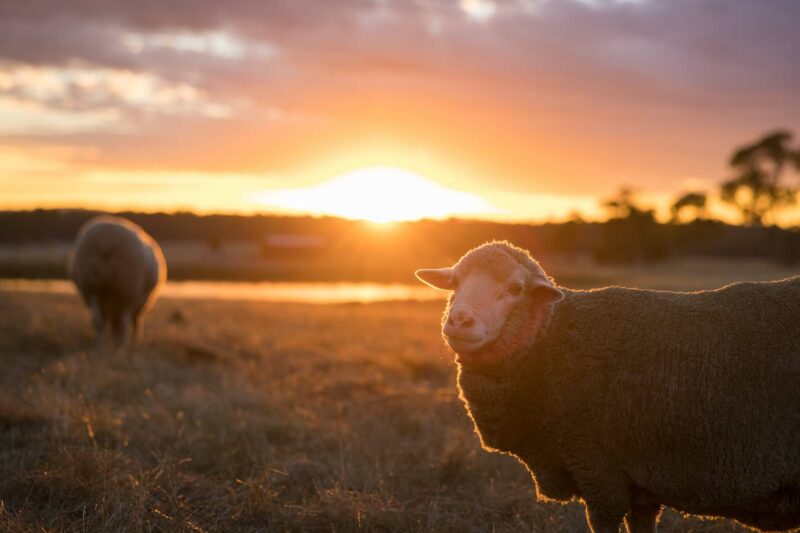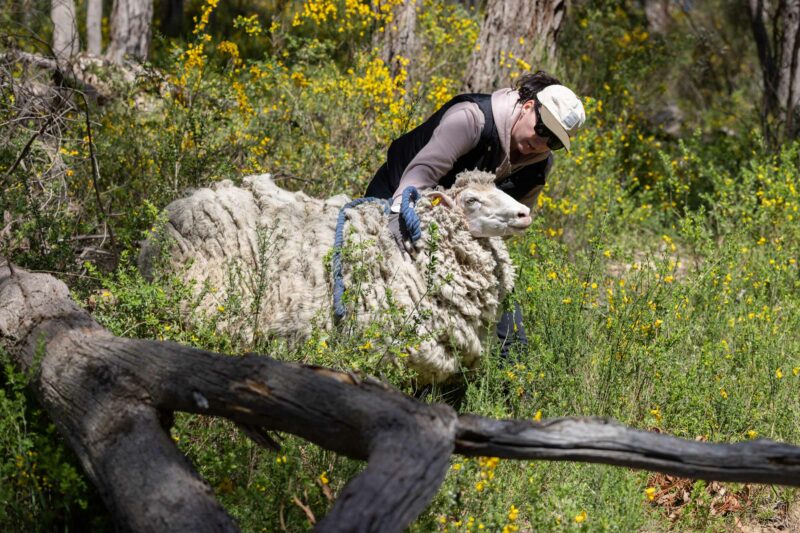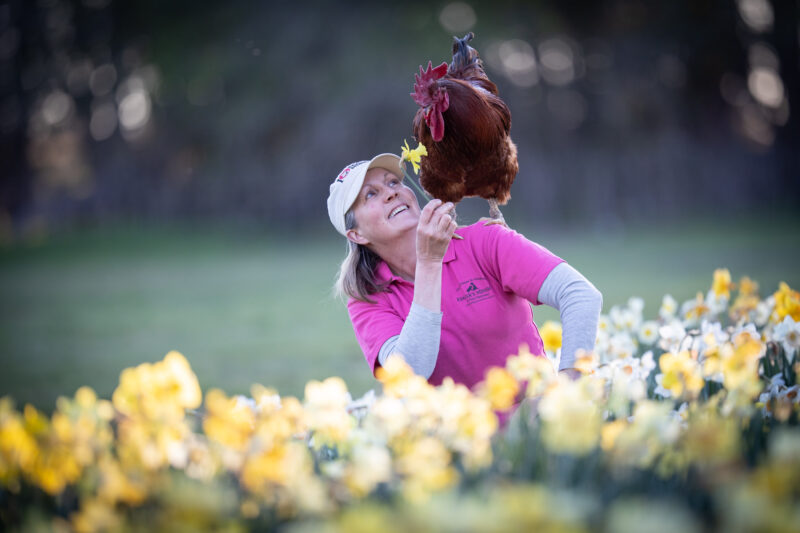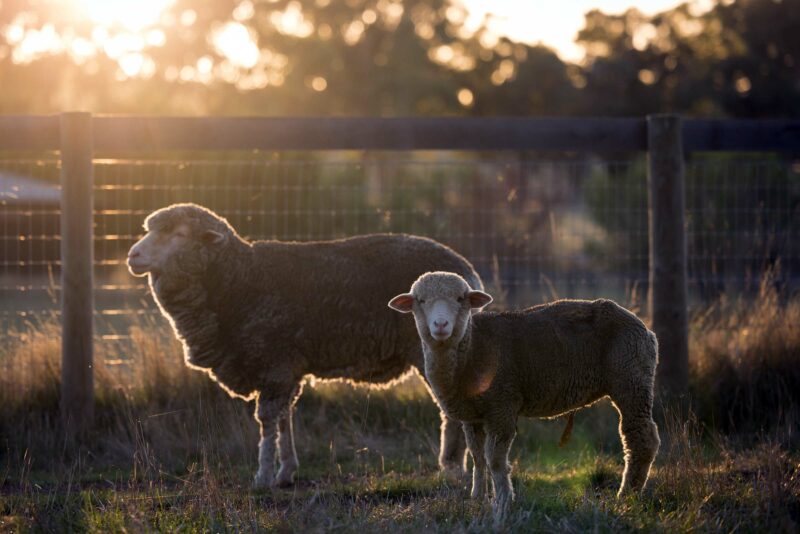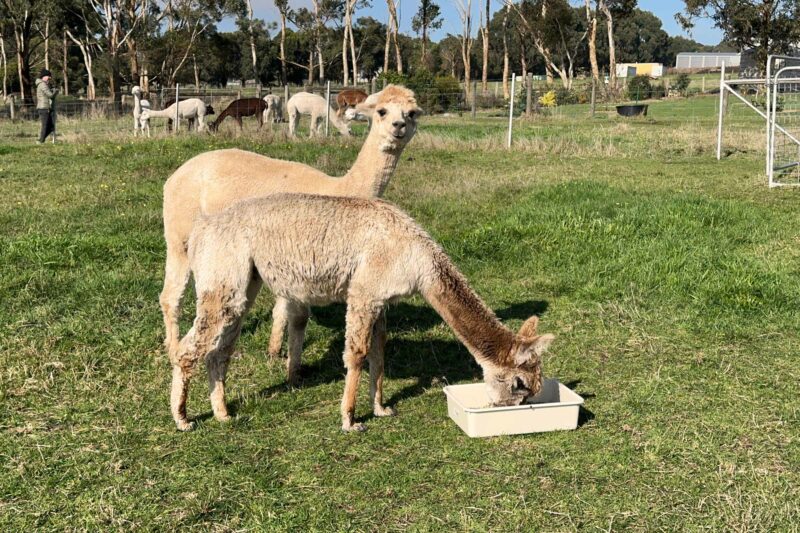
As you could well imagine I have been keeping the company of chickens rather a lot lately. Bearing witness to the transformation from frightened and featherless battery hen to confident and freedom loving fowl has been truly uplifting, and much needed after the five dark days spent on their liberation.
Many a time now I have sat down on a bale of straw and watched the majesty of a gentle hen lying on her side as the sun’s rays caress, for the first time in her life, her tatty brown feathers. Invariably, the hens blissfully close their eyes, extend their top wing to its maximum, stretch out their legs, lie back and enjoy the true nature of happiness. And here’s the punch; they do enjoy.
There can be no doubt the hens are doing this simply because it feels good; it gives them pleasure. For, after all, they are emotional creatures. Their worlds are shaped by their experiences, the things and beings around them, and sadly up until this point in time, very few things in their gloomily barren world would have given them pleasure.
At first the chickens were reluctant to move about much, not only were their bodies weak and exhausted but so too were their spirits. The slightest noise would send them into a frenzy. I recall the pandemonium in the hen house when a volunteer sneezed. It was terrifying, not so much the panic of the chickens but the thought that such a simple gesture could elicit such an unnerving response.
Today I cannot help but smile as each night I bid them good tidings, remind them I will be back tomorrow and am overjoyed to see so many mastering their biological urge to roost. Some though, prefer to take refuge in the huge tree branches we have brought in for them. Their overgrown toenails are slowly morphing from an array of Captain Hook-like hooks to more petite and well worn nails.
And we are now finding eggs that have been fastidiously tucked away in a corner under straw, others opting to make nests within one of the little boxes we have placed in their huge barn. This seemingly simple but innate urge would have previously been thwarted at every attempt prior to the hens’ arrival at Edgar’s Mission.
Pin feathers are boldly bursting forth to reclaim bare goose pimpled skin. Pin feathers are fresh new feather eruptions, which look a little like a very tiny plastic encased feather duster, waiting anxiously to be preened back to show a brilliant healthy new quill.
Having taken on the totality of the hens that would have otherwise been sent to slaughter has given a rare glimpse into the welfare implications affecting battery chickens that could only have otherwise been gained from textbooks and internet searches.
Eye afflictions and respiratory problems caused by the toxic atmosphere the hens are forced to endure day in day out within the battery cage, along with the dust, lack of fresh clean air and build up of toxic ammonia reeking up from all the accumulated faeces take many prisoners. Feather loss due to rubbing against the wire cages, stress and moulting is very real.
The previously mentioned overgrown toe nails, a direct result from lack of material to scratch about on or in, was seen to have ailed every bird. Look down at your fingernails now. Can you imagine for a moment what it would be like to not trim them for 18 months? One chicken we named ‘Big Foot’, due to the grotesquely large and lumpy feet she had. The condition she suffers we now know to be articular gout and is caused by a buildup of uric acid.
The brilliantly colored wild cousins of these purposely bred monocolored chickens would lay but a handful of eggs a couple of times a year.
Drained of calcium due to the overproduction of eggs beyond what nature intended, battery hens pump out a massive 250- 300 eggs per year, and they pay an enormous price for this in terms of weak and brittle bones and, in the most severe cases, a condition known as caged layer fatigue. The poor chicken becomes so weak and unable to move that she cannot feed herself, becoming thinner and thinner.
Sadly several hens arrived in this sorry state while many others suffered from uterus and reproductive problems. Their genetic make up tells them to keep producing eggs yet their worn out little bodies simply lack the wherewithal to do so, and herein lies the nasty little health calamity that ultimately claims the life of many of the hens.
It is a miracle indeed that so many have survived and have been able to triumph these enormous odds, and a testament to their will to live has been their ability to bounce back and forgive.
Personalities sprang forth as quickly as each cage was opened, some erupted into feisty madams declaring ‘you will never take me alive’ whilst slamming a peck on the hand that would bring salvation. Others blinked in disbelief with a ‘what is going on here’ look in their eye. Some clung tightly, some went limp, yet all were saved.
They quickly proved invariably curious and charming, intelligent and quick to learn and, given the chance, just waiting to become your next best friend.
Watermelon, grains, seeds and mash have rapidly replaced the bland layer kibble as their source of nutrition and an entire world of wonder is now being found beyond the barn door as they venture further afield each new and fun filled day – they are to be sure, intrepid explorers.
It is now over three weeks since the rescue was completed and from an economic point of view it is easy to see how Milton Arndt, back in the 1930’s got the idea of putting hens into battery style cages. The sheer task of just keeping food and water up to the girls has been enormous, not to mention cleaning up all that poop every day. Opening doors and windows of a morning, rounding the girls up of an evening, checking the health status of all, has been an incredibly time consuming exercise, which could indeed be greatly reduced if hens were confined to cages. But to subscribe to Arndt’s point of view would neglect one very important point – chickens are not inanimate objects.
The experience I have had watching the hens over the past weeks has been a living reminder that their lives matter; they matter to them, they matter to us and they matter to the countless number of good hearted people who have come forward to offer them sanctuary or to support Edgar’s Mission in our quest to rehabilitate these gentle souls. I am deeply touched each day on hearing people’s reports on how their chickens are faring, each noting the individual personalities of their new feathered friends.
The unique insights I have gained, that many would rarely get, will remain with me forever and will warm me well on dreary days, knowing I made a difference. From these gentle, fun loving, mischievous, freedom adoring, intelligent and quirky individual creatures, I have learned many things, none the least that they challenge many people’s most ingrained belief of human uniqueness. But, above all else, I have learned that when one is in the company of chickens, one is in mighty fine company indeed!


